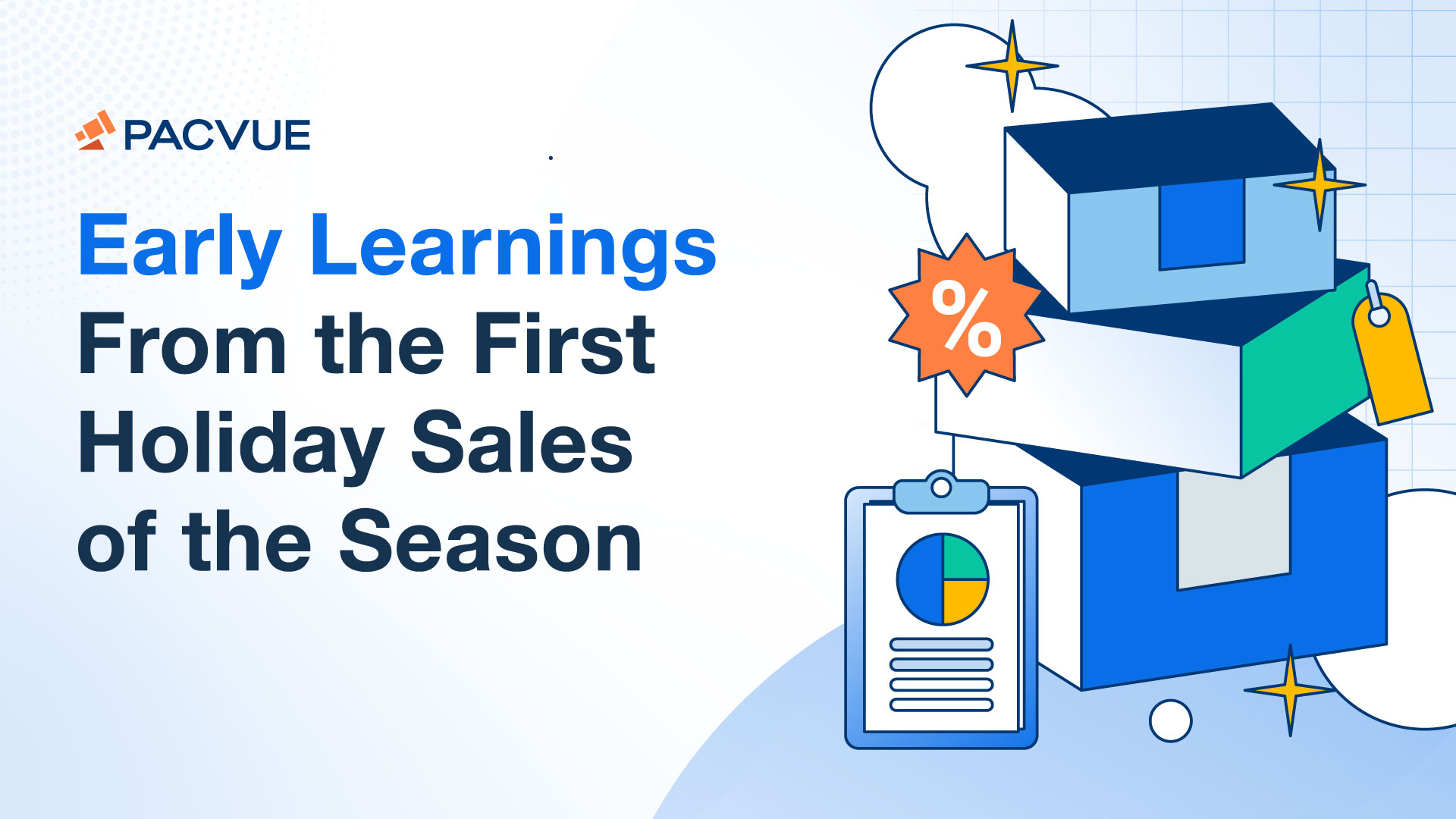Prime Big Deal Days, launched in 2022, is now the official kickoff of the yearly holiday shopping season, with Amazon succeeding in its attempt to replicate Prime Day but with a distinct holiday spin. Amazon isn’t the only one with a holiday tentpole event in October, with Walmart and Target also joining in on the fun, putting forth a full week of promotions on top of the two days of Prime Big Deals.
In this post, we’ve collected and analyzed benchmark data from all three events to see what they tell us about the retail media ecosystem, patterns in shopper behavior, and what we can apply to the ever-looming Cyber 5.
The Data-Driven Narrative
As expected with any tentpole sales event, the “gravity field” created by these promotions will affect shopper behavior and campaign performance as far as two weeks out. The data suggests that buyers and sellers share a mutual appreciation of these events. For example, the day before an event often sees performance metrics take a small dip while costs per click start to steadily increase.
Although all three events took place simultaneously, we’ll examine each one individually, as each marketplace has its own flare and focus.
Prime Big Deal Days
With three years of data to compare, it’s safe to say that parts of Prime Big Deal Days are starting to become somewhat predictable. While we won’t know for sure if next year’s performance will improve, or decline, we’d wager that the 2-week trends will look similar to the ones seen over the past three years.
Looking at ROAS, which was down 21.2% year-over-year, one could conclude that campaigns were less efficient this year. However, it’s important to remember that even if ROAS is down, it presents an opportunity to retarget customers throughout the holiday season. With average ad spend increasing dramatically, up 26.5% from 2023, it makes sense that CPCs would increase in turn – about 17% year-over-year – ultimately causing a drop in ROAS.
ROAS isn’t everything, though, especially with big sales events like Prime Big Deal Days. Despite more ad spend, eCPM improved slightly, down -0.7% YoY. Conversion rates increased as well, up +8.8% from 2023. All of this suggests that marketers are still in a growth stage, prioritizing increased brand awareness over strictly short-term profits.
Walmart Holiday Deals
Also, for the third year, Walmart’s Holiday Deals event took place the same week as Prime Big Deal Days, offering an enticing selling point: No membership required. The retail behemoth positioned itself cleverly against Amazon’s Prime Big Deal Days since shoppers would have those same two days and the four days following to weigh their decisions and find enticing purchases.
Similar to Amazon, ROAS throughout the Walmart Deals event took a dip compared to the two weeks prior, down -9.7%, in part caused by the 12.6% average increase ad spend over the period. Week-over-week eCPM increased at a higher rate than Amazon, 16.1% compared to 6.8%, though the actual cost was much lower, $2.87 compared to Amazon’s $5.13 – a 78% difference!
Target Circle Week
Target Circle Week, offering exclusive deals to Target Circle members, might well be considered a separate category from Prime Big Deal Days or Walmart Holiday Deals. While it shares similarities to these events, requiring a membership like Amazon and being a week long like Walmart, it’s unique by virtue of being both exclusive and lasting a week. It is important to note that becoming a Target Circle member is entirely free, though the Prime-esque perk of improved delivery requires a paid subscription.
While we don’t have outright sales numbers, the campaign data we do have contains a simple narrative: Marketers spent more, and performance remained steady. That alone could be considered a win – as most brands would agree that spending 23% more and seeing a half-point decrease in eCPM is a good thing.
What can brands learn from the October Holiday Sales before launching Cyber 5 campaigns?
October’s week of deals may provide some important guidance for Cyber 5, though the context being different means it’s not quite a one-to-one comparison. Cyber 5 is, for all intents and purposes, a ubiquitous and omnichannel sales event. Black Friday and Cyber Monday are top-of-mind sales events in the public consciousness. It also kicks off the season for holiday shopping, meaning varied results dependent on category.
Compare this to what we just discussed, the unofficial October Holiday Deals Week, where omnichannel participation came as a reaction to Amazon’s initial and seemingly arbitrary sequel to Prime Day.
What does this mean for performance marketers, then? In the weeks leading up to Cyber 5, expect a wave of savvy, research-focused customers. To drive attention to your most crucial listings, consider utilizing precise research tools like Pacvue’s SOV and Dayparting Manager. By tracking hourly Share of Voice data leading up to and through Cyber 5, you can react swiftly to avoid overspending on competitive keywords and maintain the top position for your key terms.
Lastly, make sure your team is set up properly for omnichannel success. Find a way to enable a cohesive, cross-retailer marketing strategy. Depending on which platforms your brand is found on, third-party software might be the best way forward.
For retail markers and eCommerce professionals, Q4 is made of equal parts opportunity and anxiety. To help you close out a successful year, we’ve put our full catalog of Holiday content into one place. Check out our Holiday HQ, where we’ll be posting upcoming blogs and guides, all with a splash of holiday cheer.












